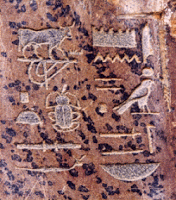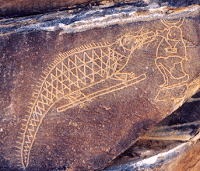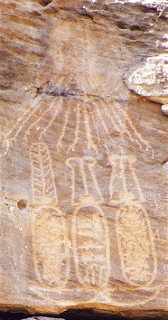Egypt





- Online: Bir Abu Safa, Eastern Desert
New York University A Water Temple at Bir Abu Safa (Eastern Desert) By Steve E. Sidebotham, Gabriel T. Mikhail, James A. Harrell and Roger S. Bagnall. JARCE XLI 2004 I found this, as usual, whilst looking for something else. This paper about a very unusual...
- Photos Of Wadi Hammamat
Flickr (Su Bayfield) Thanks very much to Vincent Brown for pointing out a set of photos on Flickr of the Wadi Hammamat engravings, taken by Su Bayfield. The Wadi Hammamat is one of the most undersung pieces of archaeology in Upper Egypt, and is a relatively...
- Daily Photo - Wadi Hammamat Inscriptions
The Wadi Hammamat in Egypt's Eastern Desert leads from Qift in the west to Quseir in the east. It was a major thoroughfare to both stone quarries in the Wadi Hammamat area from the Predynastic period onwards, and for trading expeditions to the Red...
- Daily Photo - Wadi Abd El Malek
It will come as no great surprise to regular visitors to the blog to find yet more photos of the Gilf Kebir haunting these pages, but the Wadi Abd el Malek is of particular interest for a number of reasons. Wadi Abd el Malek is a long wadi which penetrates...
- Exhibition: Gold
http://www.amnh.org/exhibitions/gold/There's an exhibition at the moment at the American Museum of Natural History (New York) which looks at gold, including its geological context, how it is extracted and its use in different ancient socieities. Having...
Egypt
Daily Photo: Inscriptions from Wadi Hammamat
The Wadi Hammamat in the Eastern Desert is the main route leading from the Nile just north of Luxor to the Red Sea coast, and was used throughout the Pharaonic period. Both expeditions through the wadi and quarrying activities within the wadi area were recorded by the expedition leaders. The inscriptions, which date from the Predynastic period onwards, are quite remarkable and are found on exposed rock surfaces along the edges of the wadi.
Click on the thumbnail to see the complete image.
Click on the thumbnail to see the complete image.





If it is of interest, I have put up a website on the archaeology of the Eastern Desert at www.wadi.cd2.com.
- Online: Bir Abu Safa, Eastern Desert
New York University A Water Temple at Bir Abu Safa (Eastern Desert) By Steve E. Sidebotham, Gabriel T. Mikhail, James A. Harrell and Roger S. Bagnall. JARCE XLI 2004 I found this, as usual, whilst looking for something else. This paper about a very unusual...
- Photos Of Wadi Hammamat
Flickr (Su Bayfield) Thanks very much to Vincent Brown for pointing out a set of photos on Flickr of the Wadi Hammamat engravings, taken by Su Bayfield. The Wadi Hammamat is one of the most undersung pieces of archaeology in Upper Egypt, and is a relatively...
- Daily Photo - Wadi Hammamat Inscriptions
The Wadi Hammamat in Egypt's Eastern Desert leads from Qift in the west to Quseir in the east. It was a major thoroughfare to both stone quarries in the Wadi Hammamat area from the Predynastic period onwards, and for trading expeditions to the Red...
- Daily Photo - Wadi Abd El Malek
It will come as no great surprise to regular visitors to the blog to find yet more photos of the Gilf Kebir haunting these pages, but the Wadi Abd el Malek is of particular interest for a number of reasons. Wadi Abd el Malek is a long wadi which penetrates...
- Exhibition: Gold
http://www.amnh.org/exhibitions/gold/There's an exhibition at the moment at the American Museum of Natural History (New York) which looks at gold, including its geological context, how it is extracted and its use in different ancient socieities. Having...
